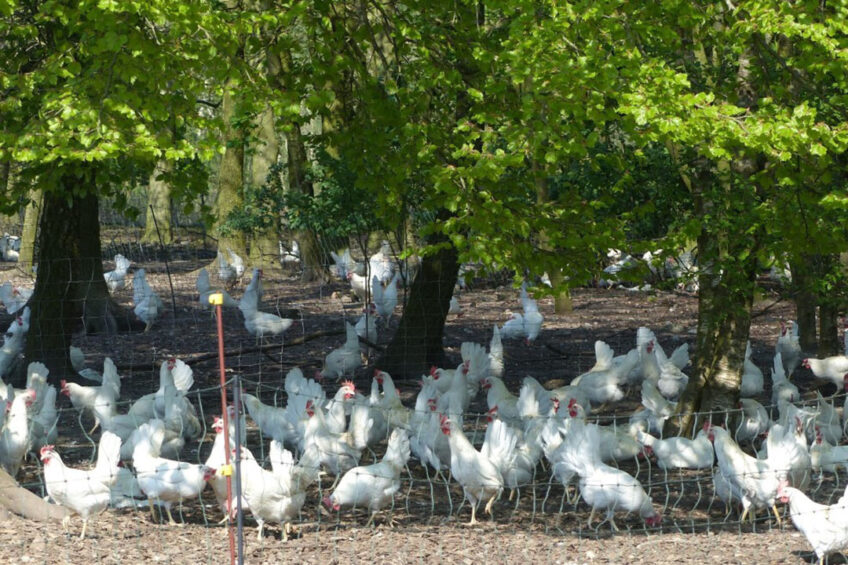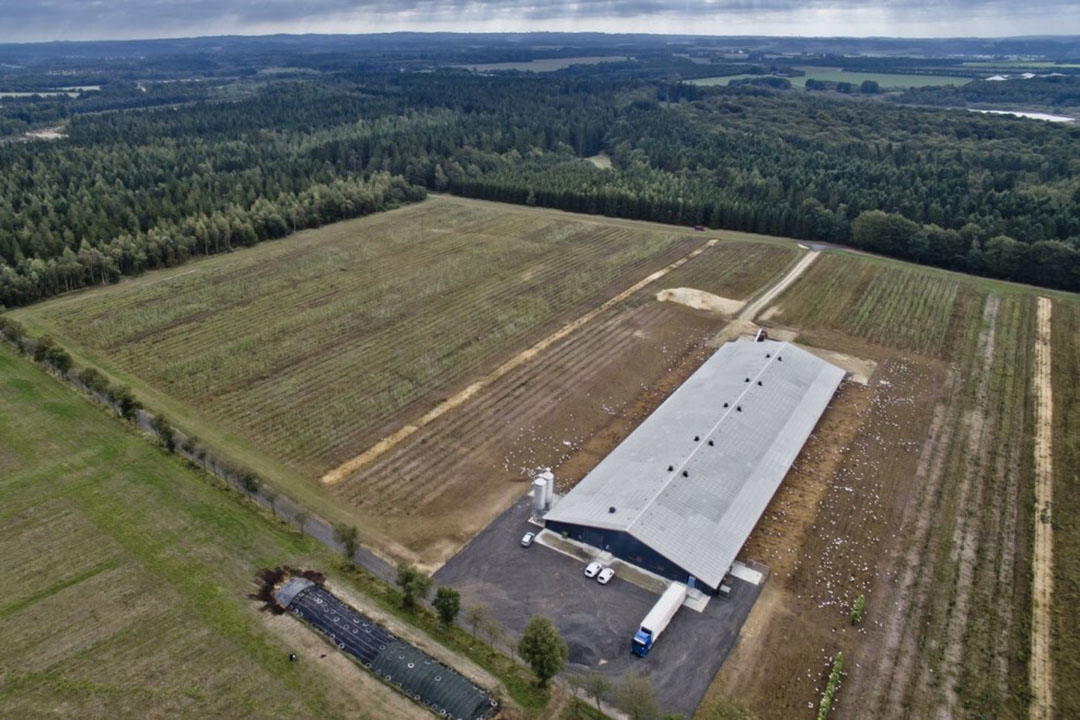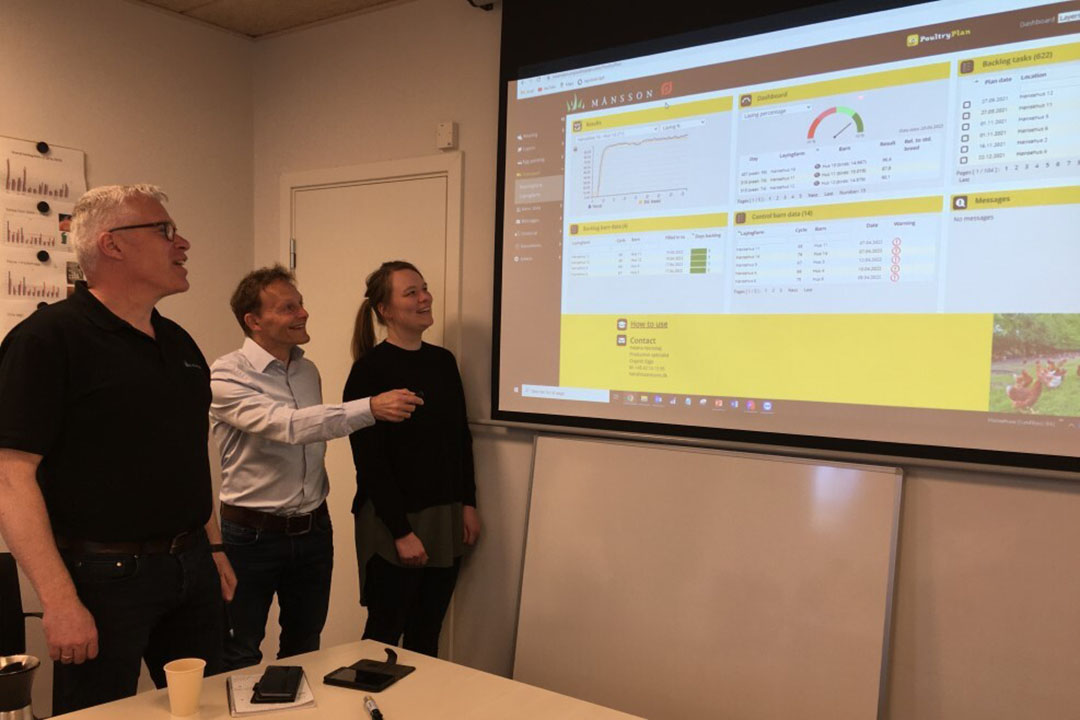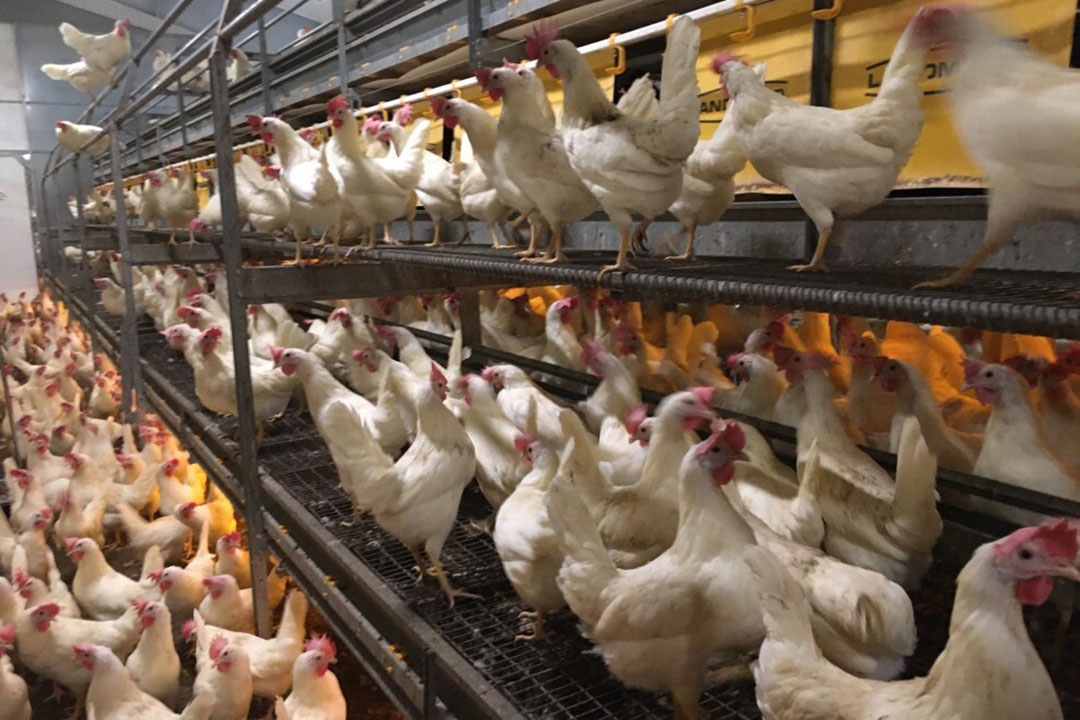Full data integration gives peace of mind for Danish poultry farm

When Mansson’s farm started egg production in 1981 with 21,000 birds, all house and production data could easily be logged in a simple Excel file. But as a growth path to the current level of 230,000 birds was plotted in the early 2000s, traditional data capture had reached its limits. Implementing Poultry Plan software provided full data integration for efficient flock and egg stream monitoring, giving peace of mind.
Poultry farms come in various sizes, small and large. A 230,000 bird layer farm is not your average ‘mom and pop’ farm anymore, nor is it the biggest of the lot, even by European standards. However, when Mansson’s farm operations manager, Claus Rasmussen, describes how he had organised the production of 72 million eggs a year, he quickly moves towards a blown-up map hanging on his office wall.
At first glance the map of the rural area outside the Danish town of Brande mainly depicts the 2,000 hectares of organic vegetable production. But, a closer look reveals 8 poultry houses scattered within a 10 km radius around the central farm and office location.

“There are multiple reasons why our production is spread out over a larger area than other layer farms,” explains Rasmussen. “The main reason is that we need 100 ha of outdoor range for all our birds – that’s quite some space. And by spreading out the houses, we also create physical separation and disease protection.”
According to the operations manager, each shed houses 30,000 birds under one roof. Internally the house is divided along the centre line, creating 2 separate houses with each side subdivided into 5 compartments to comply with organic regulations of having a maximum of 3,000 birds per pen. The same separation is continued in the wintergarten and the outdoor range.
“Each of our 8 locations is run as a stand-alone farm with a designated worker and equipment per location, dedicated feed delivery and egg pick-up directly to the supermarket packing station. The whole farm is a multi-age operation but with a single age per house,” Rasmussen says.
Organic fertilizer
One layer house was always part of the Mansson farming operation. Vegetable farming had long been the main branch but the 21,000 free-range layers provided a good secondary source of income. When owner Axel Mansson grew his business, he saw opportunities to switch to organic vegetable production. However, he soon realised that organic fertilizer was hard to come by. That is when he decided to fill that void himself by changing his chicken operation to organic, too.
“I started with organic egg production back in 1999. We had had free-range egg production since 1981, so it was not that big a step to move on to organic production,” Axel says. “I have always liked to see my animals being outside, so organic production also appeals to me in this respect.”

Today, Mansson A/S has about 230,000 organic chickens and is thus one of the largest organic egg producers in Denmark with 1 in 5 organic eggs in the country supplied by them.
“Growing agriculture is also a matter of knowledge development. This applies to organic agriculture, too. We have become wiser and more experienced in that what we could not do a few years ago, we can do today. That’s what makes it so exciting to be a farmer: using one’s own experience to change and shape the future. My vision is to become 100% organic in the near future. I would like all of Denmark to be organic. It would be great if we were to be known as an organic country out in the wider world.”
Axel believes that eventually organic production will form the basis for our existence.
Data integration
Actual growth of the poultry side of Mansson’s started some 10 years ago but it didn’t take too long before they realised that the Excel datasheets that they used had reached their limits.
“The sheer volume of data from 16 houses (under 8 roofs) made it hard to get to the bottom of what we were doing. Yes, you could do a deep dive into a problem, but it always took a lot of time and often it was reactive instead of proactive,” says Rasmussen.
With a workforce of 15, mostly foreign, employees in the houses, structured and integrated data streams were needed to keep on top of performance parameters.
“I have to be able to trust the data that comes from the houses because I cannot check all the birds myself. If I am lucky, I get around the whole farm once a week,” Rasmussen notes.

That brought Mansson’s to invest in new Poultry Plan software. This cloud-based ERP platform aggregates all the relevant production parameters and displays them in a handy dashboard overview.
“Most importantly, the system will give us an alert when something is off. To give an example, we now get alerted and are able to act immediately if feed intake and bird weight are out of bounds. In the past we would only look for issues if we saw a drop in egg production: too little, too late. With Poultry Plan we are definitely playing closer on the ball,” says Rasmussen.
Next level
Mansson’s operations manager wants to maintain control and that is precisely where the software helps.
“Given our scale of production, information is key. We want to perform to the best of our ability and that’s why we have taken control of our pullets with a newly-built rearing house where we can raise all the pullets for our whole operation. Enlarging your area of control: that is the name of the game, with rearing and with software implementation,” says Rasmussen.
One advantage Poultry Plan brings is the ability to compare and benchmark parameters with the click of the mouse. “As a farm, we constantly want to improve our performance. Therefore, we usually house multiple layer breeds, currently Lohmann Lite and Classic and Dekalb White, and we test different feed compositions. With the software, we can constantly benchmark the flocks to compare them to each other and the breeding standard, and to make smart informed choices going forward.”
With trials, testing and running a tight ship, Mansson’s is currently operating to its own standards. “We are no longer benchmarking against the breed-specific standards alone but are comparing flock to flock, as well. Constantly improving on our own progress really takes us to the next level.”
Join 31,000+ subscribers
Subscribe to our newsletter to stay updated about all the need-to-know content in the poultry sector, three times a week. Beheer
Beheer











 WP Admin
WP Admin  Bewerk bericht
Bewerk bericht